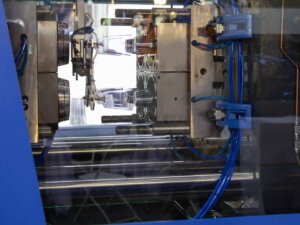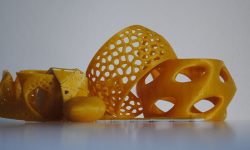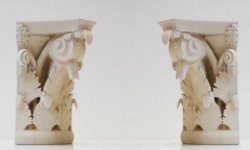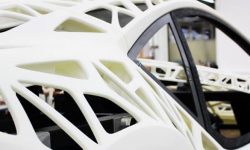The mold industry is one of the most long-span industries, and it has relationship with all areas of the manufacturing industry. In modern times, manufacturing and mold are highly dependent, and countless product components are manufactured by molding (injection, blow molding and silicone) or casting (mold casting, fining and spinning). No matter what application, the mold can improve efficiency and profit while ensuring quality.
CNC machining is the most common technique used to manufacture molds. Although it provides highly reliable results, it is also very expensive and time-consuming. Therefore, many mold manufacturers are also beginning to find more effective alternative. Making molds from additive layer manufacturing (ALM, ie, 3D printing or additive manufacturing) is also a more attractive method, especially because molds are typically produced in small batches and are more complex shapes, making them well suited for 3D Print to complete.
Today, 3D printing and a variety of printing materials (plastics, rubber, composites, metals, waxes and sands) have brought great convenience to many industries such as automotive, aerospace, and healthcare and medical, and many Companies integrate 3D printing in their supply chains, including mold making.So what benefits can mold manufacturing get from 3D printing technology?In fact, 3D printing technology can be used in the following aspects of mold manufacturing:
Molding (blow molding, LSR, RTV, EPS, injection molding, pulp mold, soluble mold core, FRP mold, etc.)
Casting (Sand Mold, Spinning, thermoforming, metal hydroforming, etc …)
Machining, Assembly and Testing (Fixing Fixtures, Moving Fixtures, Modular Fixtures …)
Robot end effector (hand grip)
There are many advantages to making a mold from 3D printing:
1) Shorten the mold manufacturing cycle
3D printing mold shortens the entire product development cycle, and become the source of driving innovation. In the past, companies sometimes opted to postpone or abandon product design updates due to the large amount of capital needed to make new molds. By reducing mold setup times and enabling existing design tools to be updated quickly, 3D printing enables businesses to afford more frequent mold changes and improvements. It enables the mold design cycle, keep up with the pace of product design cycle. In addition, some companies have purchased 3D printing equipment to make their own molds, further accelerating product development and increasing flexibility / adaptability. Strategically, it increases the ability of supply chain defenses to extend deadlines and develop risk of stagnation, such as obtaining inappropriate molds from suppliers.
2) Lower manufacturing costs
If the cost of today’s metal 3D printing is higher than the cost of traditional metal fabrication processes, the cost savings will be made easier in the plastic area. Metal 3D printed molds are economically advantageous in the production of small, discontinuous series of end products because the fixed costs for these products are difficult to amortize, or for certain specific geometries (optimized for 3D printing only) More economic advantages. In particular, 3D printing is cost-effective when the materials used are very expensive and the traditional mold making results in high material scrap rates. In addition, the ability of 3D printing to produce accurate molds in just a few hours can have a positive impact on manufacturing processes and margins. In particular, 3D printing is cost-effective when the materials used are very expensive and the traditional mold making results in high material scrap rates. Especially when production stops and / or mold inventory is expensive.
Finally, there are times when the mold has to be modified after the start of production. The flexibility of 3D printing allows engineers to try numerous iterations at the same time and to reduce the upfront costs associated with mold design modifications.
3) The improvement of mold design adds more functionality to the end product.
Often, the special metallurgical approach to metal 3D printing improves the micro structure of the metal and produces a completely dense printed part with mechanical or physical properties as good as or better than those forged or cast (depending on the heat treatment and test orientation). Additive manufacturing offers engineers unlimited options to improve mold design. When the target part consists of several sub components, 3D printing has the ability to integrate the design and reduce the number of parts. This simplifies the product assembly process and reduces the tolerances. In addition, it enables the integration of complex product functions, enabling faster production of highly functional end products and fewer product defects. For example, the overall mass of an injection molded part is affected by the heat transfer conditions between the injected material and the cooling fluid flowing through the fixture. The channels that direct the cooling material are typically straight if manufactured with conventional techniques, resulting in slower and non-uniform cooling in the molded part. 3D printing allows for cooling channels of any shape to ensure a more optimal and uniform cooling, resulting in higher quality parts and lower rejection rates. In addition, faster heat removal significantly reduces the cycle time for injection molding, as cooling times generally amount to up to 70% of the entire injection cycle.
4) Optimization tools are more ergonomic and have the lowest performance
3D printing reduces the barrier of validating new tools that address the unmet needs in the manufacturing process, enabling more moving fixtures and fixtures to be manufactured. Traditionally, tool design and corresponding devices have always been used for as long as possible due to the cost and effort required to redesign and manufacture them. With 3D printing technology, businesses can refurbish any tool at any time, not just those that are already scrapped and do not meet the requirements. Due to the small amount of time and initial cost required, 3D printing makes it more economical to optimize tools for better marginal performance. Technicians can then think about ergonomics more when designing to improve their operational comfort, reduce processing time, and be more user-friendly and easy to store. Although this may only reduce the assembly operation time of a few seconds, but can not stand up much. In addition, tool design optimization, can also reduce the rejection rate of parts.
5) Custom mold to help achieve the final product customization
Shorter production cycles, the creation of more complex geometries, and the ability to reduce final manufacturing costs allow companies to create a large number of personalized tools to support the manufacture of customized parts. 3D printing mold is very conducive to customized production, such as medical equipment and medical industry. It offers surgeons personalized 3D printed instruments, such as surgical guides and tools that enable them to improve surgical results and reduce operating time.







